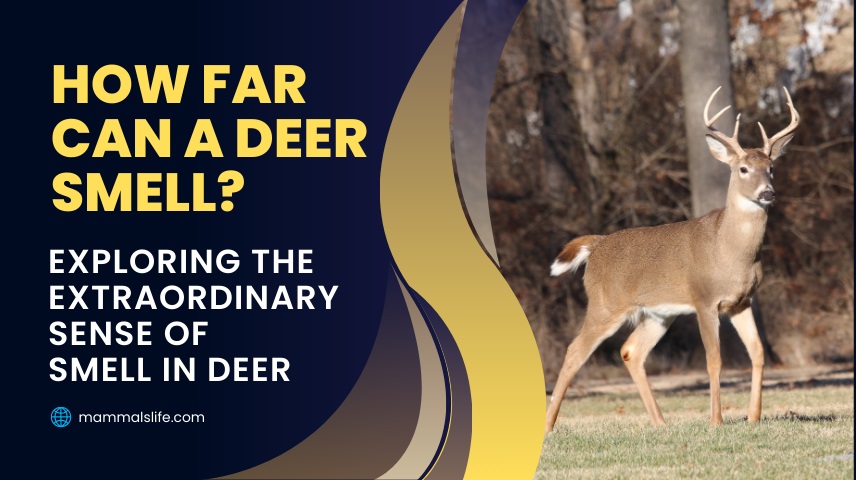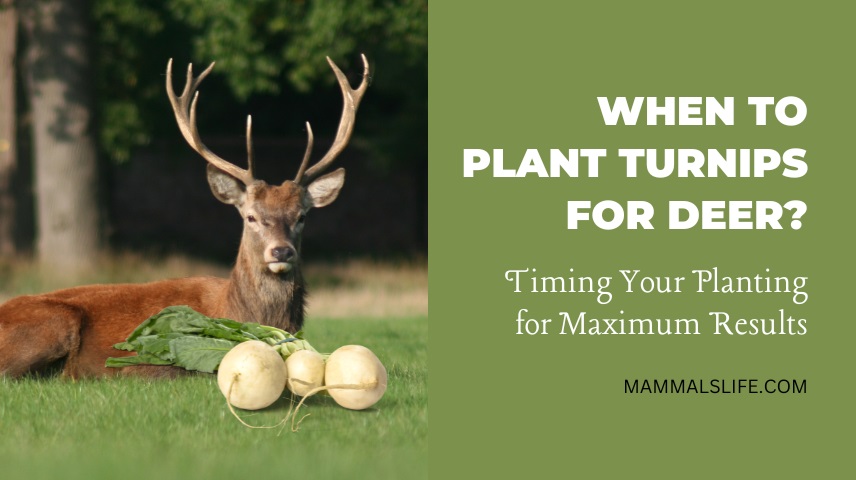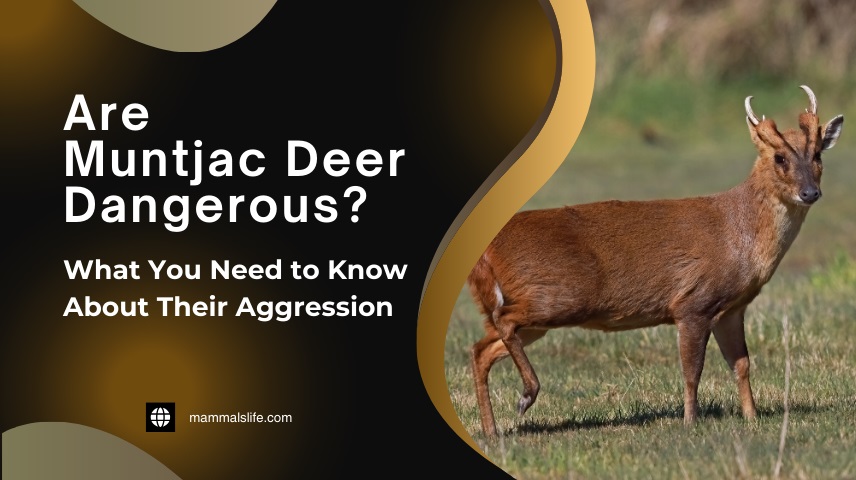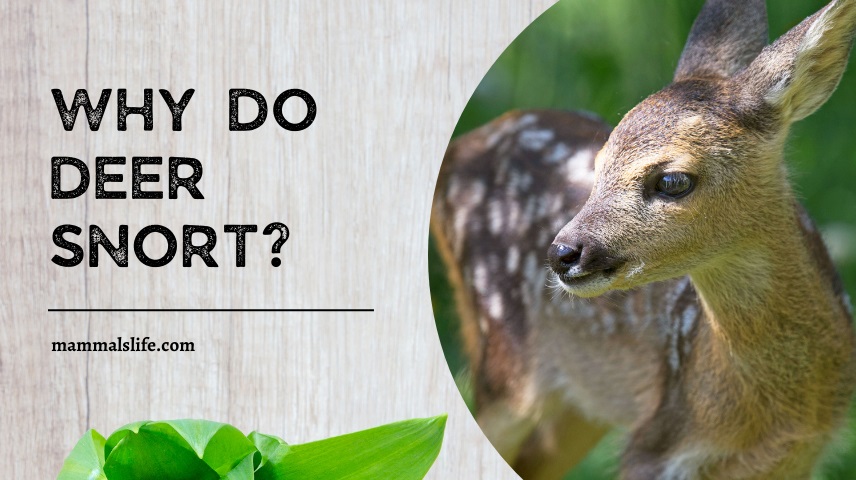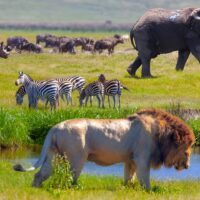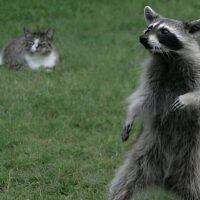Last Updated on February 22, 2025 by Mammals Life
Deer can smell scents from up to half a mile away. Their sense of smell is highly developed and crucial for survival.
Deer rely heavily on their extraordinary sense of smell to navigate their environment and detect potential threats. This keen sense allows them to pick up on scents from great distances, ensuring they can find food, and mates, and avoid predators. Their olfactory system is incredibly sophisticated, with a large number of scent receptors that enhance their ability to detect even the faintest odors.
Understanding the impressive olfactory capabilities of deer provides insight into their behavior and survival strategies. This remarkable sense of smell plays a vital role in their daily life and overall survival in the wild.
Deer’s Olfactory System
The deer’s sense of smell is extraordinary. It helps them detect predators and find food. Their olfactory system is complex and highly developed.
Anatomy Of The Nose
The deer’s nose is long and moist. This structure helps capture scent particles from the air. The nose is filled with turbinates, which are bony structures. These turbinates increase the surface area inside the nose.
More surface area means more scent particles can be detected. Deer also has a special organ called the Jacobson’s organ. This organ helps them detect pheromones, and chemical signals from other animals.
Role Of Olfactory Receptors
Olfactory receptors play a key role in a deer’s sense of smell. These receptors are found in the lining of the nose. Deer have thousands of these receptors, far more than humans.
Each receptor is designed to detect different scent molecules. This helps deer identify a wide range of smells. The receptors send signals to the brain, which then interprets the scents.
Read More – Why Do Deer Freeze in Headlights? Exploring the Instinctual Response of Deer
Range Of Smell Detection
Deer possess an extraordinary sense of smell. This sense helps them detect predators and find food. Understanding the range of smell detection in deer can be fascinating. Let’s explore how far a deer can smell and what factors influence their sense of smell.
Distance Capabilities
Deer can smell scents from great distances. Studies show they can detect smells from up to 1/4 mile away. In some cases, they may even sense odors from nearly a mile away. This powerful sense of smell allows them to stay alert and safe.
Environmental Factors
Several environmental factors affect a deer’s smell detection range. These factors include wind direction, humidity, and temperature. Wind can carry scents to a deer, making it easier for them to detect smells. On a windy day, their sense of smell becomes even more powerful.
Humidity also plays a role. Higher humidity levels help scents travel further. A deer’s sense of smell is more effective on a humid day. Temperature can influence scent detection too. Cooler temperatures usually help scents remain stronger for longer periods.
| Factor | Effect on Smell Detection |
|---|---|
| Wind Direction | Enhances scent travel |
| Humidity | Increases scent range |
| Temperature | Cooler temps enhance scent retention |
Understanding these factors can help you appreciate the deer’s incredible sense of smell. This knowledge can also aid hunters and nature enthusiasts in their activities.
Read More – Can Deer See Green Light? Exploring How Deer Respond to Different Colors
Comparative Sense Of Smell
The sense of smell in deer is truly extraordinary. This ability helps them survive in the wild. Understanding how deer compare to other animals can be fascinating.
Deer Vs. Other Animals
Deer have an exceptional sense of smell. They can detect scents from several miles away. This capability is crucial for their survival. Let’s compare their sense of smell with other animals.
| Animal | Sense of Smell |
|---|---|
| Deer | Can smell from up to 1 mile away |
| Dogs | Can smell from up to 12 miles away |
| Humans | Can smell from about 300 feet away |
Dogs have a more powerful sense of smell than deer. Humans lag far behind both animals.
Evolutionary Advantages
The strong sense of smell in deer offers several evolutionary advantages. It helps them detect predators early. This ability increases their chances of survival.
- Detecting predators
- Finding food sources
- Locating mates
Deer use their sense of smell to find food. They can locate plants and water sources. Their sense of smell also helps in mating. They can detect pheromones from potential mates.
In summary, the sense of smell in deer is a vital tool. It helps them survive and thrive in the wild.
Role In Survival
Deer possess an extraordinary sense of smell, crucial for their survival. Their highly developed olfactory system allows them to detect predators and find food. This sense helps them navigate their environment and stay safe.
Predator Detection
Deer can smell predators from a great distance. This ability helps them avoid danger. They can detect the scent of a predator up to half a mile away. Their sensitive noses pick up on subtle scents in the wind.
When a deer smells a predator, it becomes alert. They raise their heads and sniff the air. This behavior signals to other deer that danger is near. They can then flee to safety or hide.
Deer rely on their sense of smell to detect humans, wolves, and other threats. This sense is more reliable than sight or sound in dense forests. It helps them survive in the wild.
Finding Food
Deer use their sense of smell to find food sources. Their noses help them locate plants, fruits, and nuts. They can smell food hidden under snow or leaves. This ability is vital during winter when food is scarce.
Deer can distinguish between different types of plants by their scent. They choose the most nutritious options to eat. Their sense of smell guides them to areas rich in food.
They also use scent to find water sources. A keen nose helps them locate streams and ponds. This ensures they stay hydrated and healthy.
Read More – Can Deer See Red Light? Exploring Deer Vision And Light Sensitivity
Impact Of Human Activity
The impact of human activity on a deer’s sense of smell is significant. Human presence can alter natural habitats, influencing how deer use their extraordinary sense of smell for survival. Let’s explore how human activities affect deer.
Scent Masking Techniques
Hunters often use scent masking techniques to avoid detection. They use special sprays and clothing to mask their scent. Hunters also use natural elements like dirt and leaves. These techniques help them get closer to deer without being noticed.
Effect Of Pollution
Pollution affects a deer’s ability to smell. Industrial emissions release harmful chemicals into the air. These chemicals can mask or alter natural scents. This change makes it harder for deer to detect predators or find food.
| Human Activity | Impact on Deer |
|---|---|
| Scent Masking | Hides human scent from deer |
| Pollution | Masks natural scents |
Research And Studies
Understanding how far a deer can smell involves scientific research. Scientists have conducted various experiments to uncover the mysteries of a deer’s extraordinary sense of smell. These studies provide fascinating insights into the olfactory capabilities of deer.
Scientific Experiments
Several scientific experiments have been conducted to study a deer’s sense of smell. Researchers used different methods to test how far deer can detect scents.
One common method is using scent stations. Scientists place various scents at different distances. They observe how deer respond to these scents.
Another method involves tracking deer movements. Researchers use GPS collars to monitor deer behavior. They analyze how deer react to natural and artificial scents in their environment.
Key Findings
Studies have shown that deer have an exceptional sense of smell. They can detect scents from several hundred yards away. In some cases, deer have been known to smell scents up to half a mile away.
Researchers found that weather conditions affect a deer’s ability to smell. Wind direction and humidity play significant roles. Deer can detect scents better on damp, windy days.
Deer use their sense of smell for various purposes. They use it to find food, detect predators, and communicate with other deer. Their sense of smell helps them survive in the wild.
| Method | Findings |
|---|---|
| Scent Stations | Deer can detect scents from hundreds of yards away. |
| GPS Tracking | Weather conditions affect scent detection. |
In summary, deer have an extraordinary sense of smell. This ability plays a crucial role in their survival.
Frequently Asked Questions
How Far Away Can Deer Smell You From?
Deer can smell humans from up to 1/4 mile away. Their keen sense of smell helps detect predators.
How Strong Is A Deer’s Sense Of Smell?
A deer’s sense of smell is incredibly strong. They can detect scents from up to half a mile away. This keen ability helps them avoid predators and find food. Deer rely heavily on their olfactory senses for survival.
How Far Can A Deer Smell An Apple?
A deer can smell an apple from up to a quarter mile away. Their keen sense of smell helps them detect food.
Can A Deer Smell Better Than A Dog?
No, a deer cannot smell better than a dog. Dogs have a more developed sense of smell. Deer have excellent senses but dogs are superior in olfactory abilities.
How Far Can A Deer Smell?
Deer can detect scents up to 1 mile away, depending on wind and environmental conditions.
What Enhances A Deer’s Sense Of Smell?
A deer’s large nasal cavity and numerous olfactory receptors enhance its sense of smell significantly.
Conclusion
Deer’s sense of smell is truly remarkable. They can detect scents from miles away. Understanding this ability enhances our appreciation of wildlife. This extraordinary sense aids their survival in the wild. It’s fascinating to learn how nature equips creatures for survival.
Respecting their habitat ensures we preserve these incredible animals for future generations.

